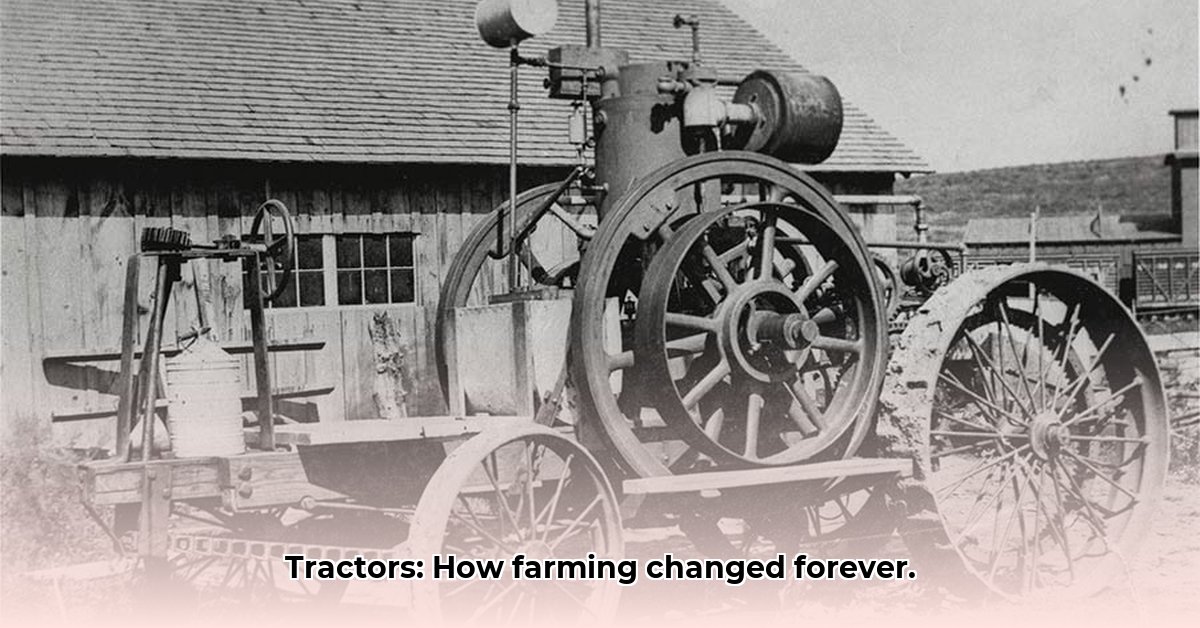
The Birth of the Iron Horse: How the Tractor Changed Everything
Before the invention of the tractor, farming was incredibly arduous. Farmers relied on animal power—horses, oxen, mules—to plow fields. This was slow, laborious work entirely dependent on weather conditions. A rainy season could ruin a farmer's entire year. The work itself was backbreaking. The internal combustion engine proved a game-changer. While some early attempts at mechanizing farming used steam power, these proved inefficient. Gasoline offered a more portable and powerful alternative. John Froelich's 1892 gasoline-powered tractor is often cited as a significant milestone, marking the true beginning of the agricultural revolution. This was the dawn of the modern tractor. For more on 1960s models, see 1960s Tractors. How else could farmers have overcome the limitations of animal power, considering the vast scale of agricultural needs?
Making it Work: Innovations that Fueled the Tractor Revolution
Early tractor development involved significant technological leaps. It wasn't simply about a larger engine; engineers faced numerous challenges. Creating an engine powerful enough yet efficient enough for practical use was key. They also needed durable, reliable transmissions (systems controlling speed and power) and strong soil-interaction mechanisms, such as plows. Early models were imperfect—expensive, unreliable, and difficult to operate. Repairing these behemoths in a field was a daunting task. Yet, these early designs laid the groundwork for today's powerful machines. Each generation of tractors built upon the successes and learned from the failures of its predecessors.
Winning Over Farmers: The Tractor's Slow and Steady Rise
Initially, many farmers were hesitant about tractors. The high upfront cost and the uncertainty of this new technology were major obstacles. Would it truly outperform long-established methods? World War I unexpectedly boosted tractor adoption. The war's demands for food production made tractors essential, not only for transporting military equipment but also for speeding up farming. This wartime need dramatically increased demand. Post-war, mass production led to lower prices, making tractors more accessible. The post-war economic boom solidified the tractor's place in agriculture. The tractor didn't just automate farming; it fundamentally altered how agriculture functioned.
A World Transformed: The Impact of the Tractor
The tractor's invention didn't merely make farming easier; it revolutionized the agricultural landscape. Farmers could cultivate much larger fields in less time. This increased efficiency led to higher crop yields, crucial for feeding a burgeoning global population. Planting and harvesting became faster and more efficient, saving time and money. The impact was far-reaching and profound, affecting all aspects of global agricultural production. Did this efficiency lead to increased food security worldwide? The answer is a resounding yes.
Key Moments in Tractor History: A Timeline
| Year | Milestone |
|---|---|
| 1892 | John Froelich patents a gasoline-powered tractor. |
| 1910s | Mass production begins, making tractors more affordable. |
| 1920s-30s | Significant improvements in engine design and reliability. |
| 1940s | Tractors play a vital role in wartime food production. |
| Post-1940s | Ongoing refinement leads to automation and specialized tractor types. |
How Did WWI and WWII Impact Tractor Development and Adoption?
Before the world wars, tractors were uncommon. Farming relied heavily on human and animal power. The wars changed this fundamentally.
Key Takeaways:
- Increased demand for food production spurred innovation and mass production.
- Wartime technologies, like internal combustion engines, were adapted for tractors.
- Governments invested heavily in agricultural mechanization.
- Post-war surpluses of military vehicles and factories led to affordable tractors.
- The wars fundamentally reshaped farming, accelerating the shift to mechanized agriculture.
The Great War's Influence
World War I dramatically increased the demand for food. Europe's farming workforce was depleted, creating a pressing need for more efficient methods. Tractors, initially niche technology, became crucial. Mass production and design improvements met this urgent need. While not widespread initially, WWI laid the groundwork for future growth.
The Second World War's Acceleration
World War II further propelled tractor development. The demands for food production were even greater than in WWI. Wartime advancements in engine design and mass production directly benefited agriculture. Post-war, surpluses of military vehicles and factories, coupled with government support programs, led to rapid tractor adoption globally. This rapid shift to mechanized systems is remarkable.
A New Era in Farming
The impact of both world wars was a fundamental shift in farming practices. Before the wars, farming was labor-intensive. Afterward, the tractor symbolized a new era, driving efficiency and changing agricultural landscapes worldwide. This transformation continues to shape our food systems today.